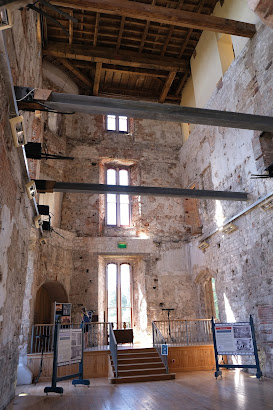Lulworth Castle
We have passed Lulworth Castle many times on the way to Lulworth Cove and other parts of the Purbeck coast, but until today had never visited it. Nowadays you have to pre-book. We parked in the car park and walked through the attractive stable block ...
... to quickly emerge in front of the wonderful castle. This is the main entrance.
The surprising discovery was that the castle was burned down in 1929, probably as the result of an electrical fault, and was left as a shell for the next 50 years. A major campaign in the 1980s and 1990s, supported by English Heritage, led to the exterior being restored to the splendid state it is in now.
The castle was built in about 1608 by Thomas Howard, 3rd Viscount Bindon,
whose main seat was at Bindon Abbey. Lulworth was regarded as a Lodge, a
compact house for occasional use.
The surprising discovery was that the castle was burned down in 1929, probably as the result of an electrical fault, and was left as a shell for the next 50 years. A major campaign in the 1980s and 1990s, supported by English Heritage, led to the exterior being restored to the splendid state it is in now.
Unfortunately, reinstating the interior was found to be impracticable and it remains a shell.
Isolated examples, like this fireplace and door, provide a slight sense of what it might once have been like.
When we finished our internal tour we headed out to see the castle chapel, a remarkable neo-classical building built in 1786-7. It was the first free-standing Catholic church to be built since the Reformation according to Pevsner. George III allegedly only gave permission on the basis that it should not look like a church.
Beyond the chapel in one direction is Lulworth Castle House, a neo-classical house of 1975, carefully hidden from view. It is possible to get an overview of the park (the estate is 20 square miles in all).
A closer examination of the far side of the park reveals the grand North Lodges of 1875. A bigger zoom lens would have revealed more.
Returning to the opposite side of the Castle, there is the church of St Andrew of 1863-4. The imposing tower is 15th century.
Conditions: bright and sunny.
Rating: four stars. Rather wonderful. I wish we had seen it sooner.









No comments:
Post a Comment